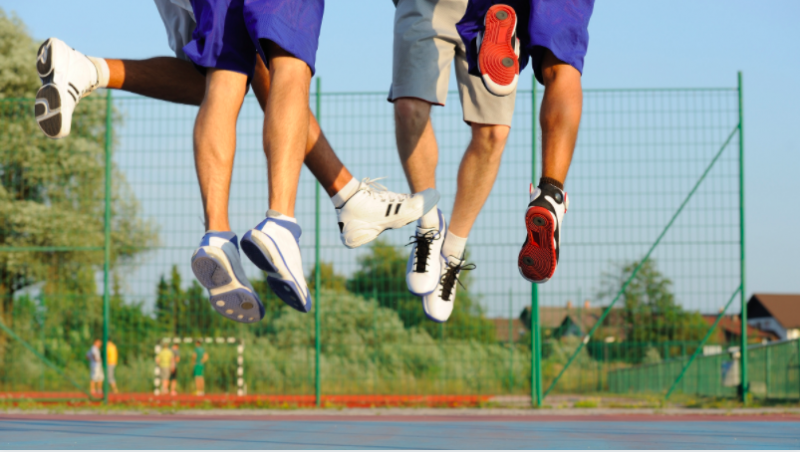
What is Jumper’s Knee?

Is your knee sore? Do you experience discomfort during daily activities because of knee pain? There is a chance you may be suffering from Jumper’s Knee, a common condition caused by overuse of the knee joint. Treatment by our Orthopedist in Wyckoff, NJ can be found at New York Sports Medicine Institute. At NYSMI, highly skilled professionals are dedicated to helping patients recover from a variety of knee injuries.
What is Jumper’s Knee?
Jumper’s Knee, formally known as Patellar Tendinopathy, is a condition that affects the knee joints. Small tears in the patellar tendon cause painful inflammation in the knee area. These tears are typically caused by stresses put on the patellar or quadriceps tendon.
Recognizing the Symptoms
Engaging in extraneous physical activity regularly can cause wear and tear on your knee joints. Athletes in particular are at risk for developing a knee injury. Some of the most common warning signs of Jumper’s Knee include:
- Tenderness and swelling of the knee
- Discoloration
- Pain when walking, running, or jumping
- Pain when bending or stretching the knee
If you are experiencing any of these symptoms, an Orthopedist in Wyckoff, NJ can diagnose your injury. During medical consultation, a physician must perform the following:
- Physical examination: A physician assesses the affected area. During this process, the physician is also collecting information regarding how the injury occurred and the level of pain the patient is in.
- Evaluation of the patient’s medical history: Identifying prior injuries is important when evaluating and diagnosing a knee injury. Reviewing medical records ensures quality care for the patient.
- Analysis of medical imaging: X-rays or an MRI scan are sometimes necessary for determining the severity of the injury.
Common Risk Factors of Jumper’s Knee
Jumper’s Knee is a painful, yet fairly common condition. It is caused by repetitive stress on the knee’s tendons typically during jumping. Sports that involve a great amount of jumping put athletes at risk for this condition. However, some non-jumping sports can also cause knee injuries. Some of the high-risk sports for Jumper’s Knee include:
- Track and field jumping
- Basketball
- Volleyball
Several risk factors increase the probability of sustaining an injury while participating in these sports. Understanding the risk factors is beneficial for prevention. The following are examples of common risk factors:
- Training more than 12 hours a week
- Playing or training on hard surfaces
- Excessive training in combination with weight-bearing activities
Tips for Prevention
Our Orthopedist in Wyckoff, NJ is available to help answer commonly asked questions and provide useful information to prevent future injury. Prevention is key when it comes to sports-related injuries.
- Stretching: Properly stretch all of the muscles you will before and after physical activities. A 5 to 10 minute stretch before working out will significantly decrease the likelihood of injury.
- Warm-Up: Before beginning a workout, allow the body to gradually warm up to exercise. Begin by slowly stretching and increasing your heart rate.
- Cool Down: After your workout, slow your heart rate back down with a light walk and additional stretching. This will reduce your chances of muscle cramps, stiffness, and injury.
- Gradually Increase the Intensity: As your body begins to strengthen, gradually intensify your workouts. Overexertion can have severe consequences on your muscles, joints, and bones.
Treatment Options
Treatment options for Jumper’s Knee can vary depending on the severity of the injury. If you need an Orthopedist in Wyckoff, NJ, New York Sports Medicine Institute offers both orthopedic surgery and physical therapy alternatives.
For less severe cases: the R.I.C.E method can be beneficial for patients. This treatment involves Rest, Ice, Compression, and Elevation. Patients with Jumper’s Knee should avoid putting stress on the area such as running or jumping while the knee is rehabilitating. Physical therapy allows a patient to slowly strengthen their knee.
In more severe cases: surgical options are available. Two types of surgical options are arthroscopic debridement and Arthroscopic resection of the inferior aspect of the patella. The first option is used for removing damaged tissue in the knee. The second option is used to remove or realign a damaged piece of the patella bone that is causing stress on the patellar tendon.
Rehabilitation is crucial for recovery. If you are currently suffering from knee pain, do not hesitate to seek professional help. At New York Sports Medicine Institute, our team is here to help you get back on your feet and back to doing what you love as soon as possible!
